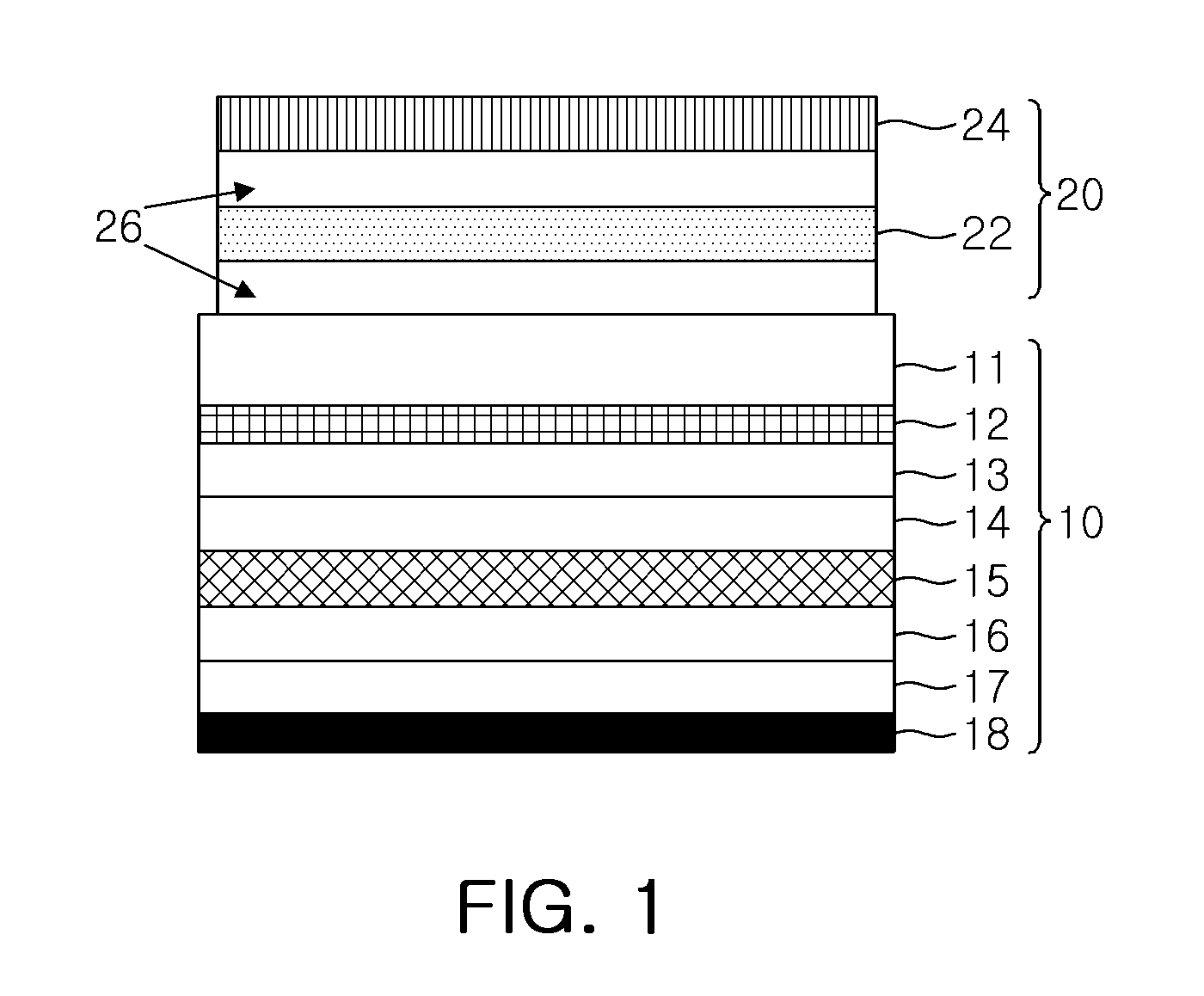Luminance-enhancing polarising plate for an organic light-emitting element
- Summary
- Abstract
- Description
- Claims
- Application Information
AI Technical Summary
Benefits of technology
Problems solved by technology
Method used
Image
Examples
example 1
[0039]A conventional linear polarizer, which was obtained by stacking TAC protective films on upper and lower surfaces of a polyvinyl alcohol (PVA) film, was used as a base film. Then, the polarizer having improved brightness according to one exemplary embodiment of the present invention was prepared by sequentially attaching a reflective polarizer film (brightness-improving film, 3M) and a 140 nm-thick ¼ wavelength retardation film (a COP elongation film having a normal dispersion characteristic) to a lower surface of the conventional linear polarizer. Here, the reflective polarizer film might transmit a certain linearly polarized light at a transmittance level of 50%. Then, the prepared polarizer was attached to an OLED panel (a 2-inch passive matrix-type OLED panel).
example 2
[0040]A conventional linear polarizer, which was obtained by stacking TAC protective films on upper and lower surfaces of a PVA film, was used as a base film. Then, a reflective polarizer film (brightness-improving film, 3M) that might transmit a certain linearly polarized light at a transmittance level of 50% was attached to a lower surface of the conventional linear polarizer. Then, a color compensation adhesive whose transmittance is adjusted to a level of 80% was prepared by adding a black dye to an acryl-based adhesive (a mixing ratio=100:0.02), and the reflective polarizer film was coated with the color compensation adhesive to form a color compensation adhesive layer. Then, a 140 nm-thick ¼ wavelength retardation film (a COP elongation film having a normal dispersion characteristic) was attached onto the color compensation adhesive layer to prepare a polarizer having improved brightness according to one exemplary embodiment of the present invention. Finally, the prepared pola...
experimental example 1
[0043]The OLED panels prepared in Examples 1 to 2 and Comparative examples 1 and 2 were measured for brightness and reflectance.
[0044]The brightness was calculated after the intensity of light emitted during the driving of each OLED panel was measured according to the wavelengths. Here, the brightness ratios of the OLEDs were listed in the parentheses, provided that it was assumed that the intensity of light emitted from the OLED panel (Comparative example 1) to which the polarizer was not attached was 100%.
[0045]Meanwhile, the reflectance was calculated by measuring the intensity of light reflected on the front side of each OLED panel using a UV spectrometer. Here, the reflectance ratios of the OLEDs were listed in the parentheses, provided that it was assumed that the reflectance of the OLED panel (Comparative example 1) to which the polarizer was not attached was 100%.
[0046]The measurement results are listed in the following Table 1.
TABLE 1Brightness, cd / A (%)Reflectance, AU (%)C...
PUM
 Login to view more
Login to view more Abstract
Description
Claims
Application Information
 Login to view more
Login to view more - R&D Engineer
- R&D Manager
- IP Professional
- Industry Leading Data Capabilities
- Powerful AI technology
- Patent DNA Extraction
Browse by: Latest US Patents, China's latest patents, Technical Efficacy Thesaurus, Application Domain, Technology Topic.
© 2024 PatSnap. All rights reserved.Legal|Privacy policy|Modern Slavery Act Transparency Statement|Sitemap



